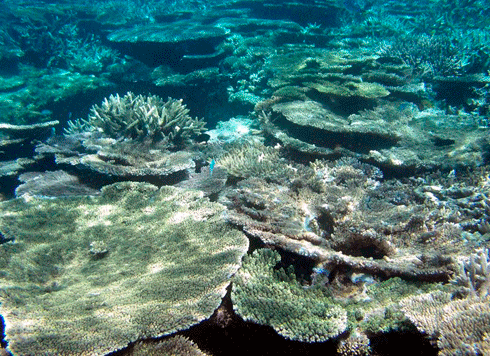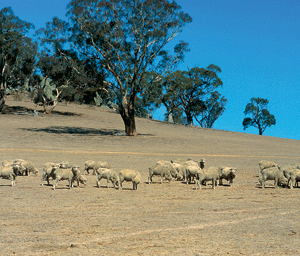
|
Published: 28 November 2011
Corals perplexed by ocean warming
Australian scientists think they have identified the mechanism behind the mass death of corals worldwide under global warming.
Corals undergo bleaching in response to rising water temperatures. Bleaching occurs when the corals and the algae that live within them – and on which they feed – become heat-stressed. As a result, the algae either die or are expelled by the coral.
The Great Barrier Reef has suffered eight bleaching events since 1980, the worst being in 2002 when 55 per cent of the total reef area was affected.
Researchers from the ARC Centre of Excellence for Coral Reef Studies and James Cook University recently published proof that warming sea water can trigger a cascade of molecular signals resulting in ‘cell suicide’ within corals and their symbiotic algae.1
Working with Acropora corals from Heron Island’s reef, they found the cascade begins at ocean temperatures as much as 3 degrees lower than those normally associated with coral bleaching.
The corals’ response culminates in ‘apoptosis’ or programmed cell-death: a process in which living organisms deliberately destroy weakened or infected body cells to protect the organism as a whole.
‘Our results suggest that the control of apoptosis is highly complex in the coral-algae symbiosis and that apoptotic cell death cascades potentially play key roles in tipping the cellular life or death balance during environmental stress prior to the onset of coral bleaching,’ says lead author, Dr Tracy Ainsworth.
Paradoxically, the team’s research identified molecular signals both promoting and discouraging programmed cell-death in the corals.
This has led them to a theory that corals respond to the stresses from warming sea water by killing off some of the cells, while strengthening others in order to stage a possible recovery after the hot water has moved off the reef and conditions have returned to normal.
‘The next step in our research will be to see how we can use this new insight into the processes of coral bleaching to understand their recovery mechanisms. We also need to know more about how this process works at lower temperatures, or under varying temperatures.
‘That in turn will lead us to explore ways that coral reef managers and users can perhaps minimise other stresses on the reef in order to give it the best possible chance of recovery from bleaching.’
Source: ARC CoE for Coral Reef Studies
1 Ainsworth TD, Wasmund, K, Ukani L, Seneca F, Yellowlees D, Miller D and Leggat W (2011) Defining the tipping point. A complex cellular life/death balance in corals in response to stress, Scientific Reports 1 (Nature Publishing Group), doi:10.1038/srep00160, nature.com/srep/2011/111117/srep00160/full/srep00160.html




